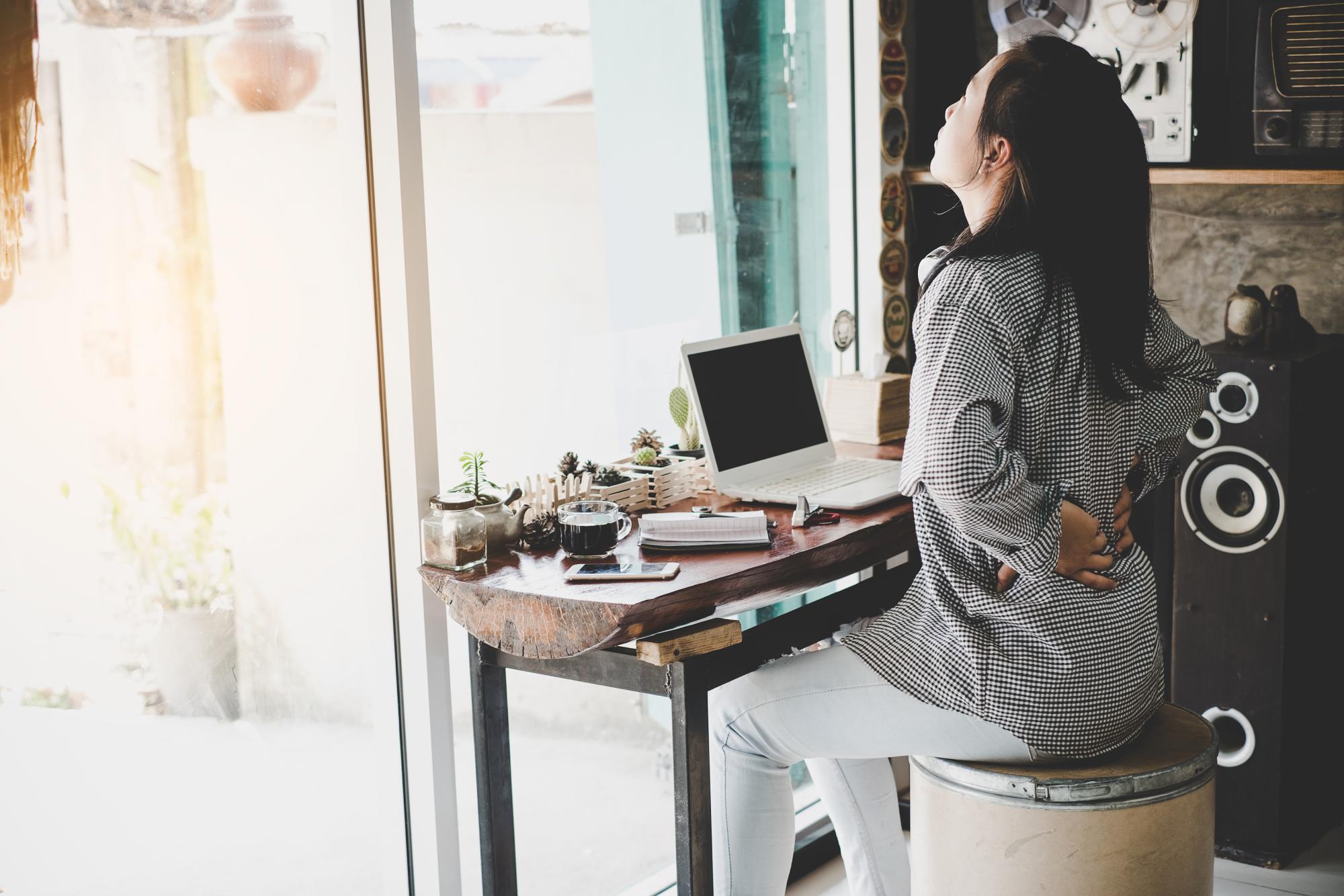
Experiencing Back Pain from COVID-19?
COVID-related back pain…is it a thing? I’m going with a big YES. Time hunched over a computer almost always equals more back (and neck) pain. Today, I want to focus on low back pain.
The low back and pelvis (also known as the lumbopelvic region) is a really fun area to study and treat. It really is an amazing and complex region with interplay between a whole lot of ligaments, muscles and other connective tissues. And while people tend to blame discs and nerves for all of their back pain, the truth is that all of these tissues can generate pain. You just need to find a practitioner who is skilled at figuring that out!
If you have low back pain, you know that it’s a fickle beast. It can be intense one day and not the next. The pain can stay in the low back region, it can be felt in the tailbone and butt area, and it can travel north and make people think they have a kidney infection. And, for some people, low back pain can travel (radiate) down their legs, which may make them think they have sciatica.
There is a lot your friendly neighborhood naturopathic physician can do to alleviate back pain. A big part of my practice focus is pain, so I’m familiar with what tools we naturopaths have and how effective they can be. Be sure that you don’t overlook naturopathic therapies in favor of conventional therapies that may have undesirable side effects.
Acupuncture, herbs, nutrients, hydrotherapy, low-dose dextrose injections, IV therapy and topical pain relievers are all treatments that can be used to resolve acute low back pain. For ongoing back pain, prolotherapy and PRP (platelet rich plasma) injections are two of my favorite ways to fix the underlying problem, with long-lasting results.
But everyone’s best bet right now is to get your own back pain house in order. It doesn’t look like remote worksites and a lot of Zoom meetings are going away anytime soon, so let’s talk about things that can be done at home to help your back. Keep in mind that I’m not your doctor, so you should ask your doc if what I’m talking about is appropriate for you.
Here we go:
Get up and get moving. We all settle into poor positions when we’re at a computer all day and it may be even worse at home. Does anyone else slouch into the couch to get work done? Set a timer on your phone and get up to stretch or walk around on a regular basis. A standing desk may be a great investment to give you the option to change positions.
Mobility exercises. Talk to your physical therapist or personal trainer because they can be awesome resources to help address back pain. Sometimes YouTube is a decent resource for exercises to help back pain, but you’re way better off working with someone who can identify and address your specific needs. You don’t need to get injured trying to fix your pain!
Exercise. Again, talk to your trainer or PT about a back-pain-relieving workout. If quarantine and isolation have caused you to fall out of shape, you’ve definitely lost core strength. And a strong core will help prevent a sore back.
Heat. It relaxes muscles and increases blood flow to injured areas, which speeds along the healing process. I know heat is difficult to apply when it’s 90 degrees in the summer, but it can be worth it for someone in pain!
Ice. Honestly, I am not a fan of using ice. The science behind using ice is extremely shaky and outdated. When left on for long periods of time, ice reduces blood flow to an injured area and slows down the body’s natural healing process. I usually tell my patients that they can use ice, but for no more than five minutes.
Foam rolling, peanut or other manual therapies. These tools essentially let you massage yourself. Of course, I do realize that having a massage therapist perform your massage is better, but a lot of people don’t want to risk the extra COVID exposure. Again, with these tools, it’s best to seek the guidance of a professional. But a lot of these tools are user-friendly and can undo a lot of the day’s damage.
I hope these tips help. None of us has been through a pandemic before and it’s a time to be flexible with our routines so that we develop the ability to get through it or, even better, thrive. It’s all about developing resilience right now and I really hope that these tips help with building your ability to bounce back!

By: Amber Belt, ND
Written for Flagstaff Business News




